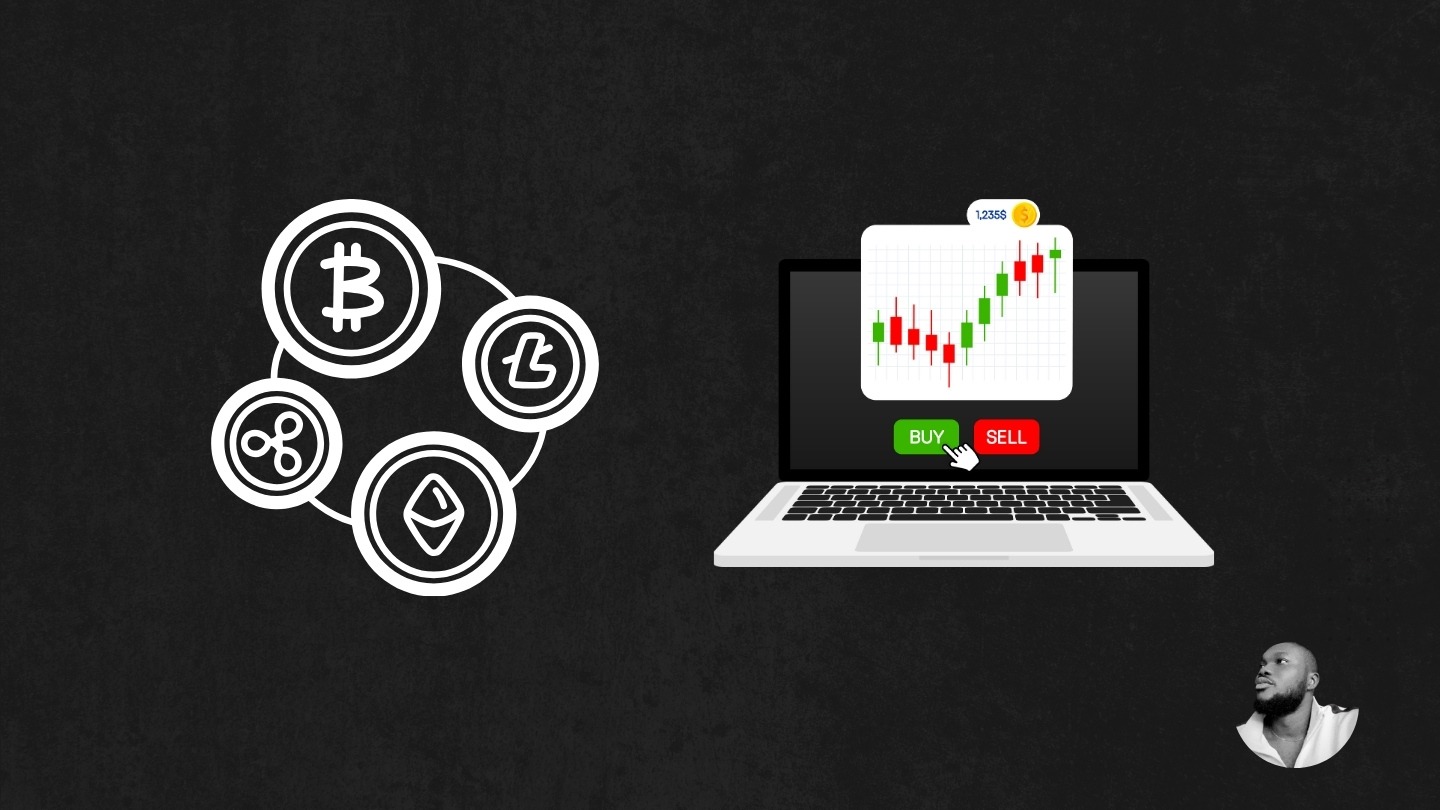Top 5 Strategies for Beginner Crypto Traders
Navigating the volatile world of cryptocurrency trading can be daunting for beginners, with its rapid market shifts and complex dynamics. However, by employing effective strategies, novice traders can mitigate risks and enhance their chances of success. This guide explores the top five strategies for beginner crypto traders, focusing on avoiding common pitfalls that often lead to financial setbacks. From understanding market trends, setting realistic goals, managing risks, and diversifying portfolios, these strategies provide a solid foundation for those new to the crypto market. By adopting these approaches, beginners can build confidence and make informed decisions, paving the way for a more secure and profitable trading experience.
1. Understanding Market Trends: A Beginner’s Guide
Understanding market trends is a crucial aspect for beginner crypto traders aiming to navigate the volatile world of cryptocurrency successfully. As the digital currency landscape continues to evolve, it becomes increasingly important for newcomers to grasp the fundamental strategies that can help them avoid common pitfalls. One of the primary strategies is to conduct thorough research before making any investment decisions. This involves understanding the underlying technology of cryptocurrencies, such as blockchain, and staying informed about the latest developments in the crypto space. By doing so, traders can make more informed decisions and avoid falling prey to hype or misinformation.
In addition to research, diversifying one’s portfolio is another essential strategy for mitigating risk. Just as in traditional investing, placing all your funds into a single asset can be risky, especially in a market as unpredictable as cryptocurrency. By spreading investments across a variety of cryptocurrencies, traders can reduce the impact of a poor-performing asset on their overall portfolio. This approach not only helps in managing risk but also increases the potential for returns, as different cryptocurrencies may perform well at different times.
Furthermore, setting clear goals and limits is vital for maintaining discipline in trading. Beginners should establish specific entry and exit points for their trades, as well as determine the amount of capital they are willing to risk. This strategy helps in preventing emotional decision-making, which can often lead to significant losses. By adhering to predetermined goals and limits, traders can maintain a level-headed approach, even when the market experiences sudden fluctuations.
Another important strategy is to stay updated with market news and trends. The cryptocurrency market is heavily influenced by news events, regulatory changes, and technological advancements. By keeping abreast of these developments, traders can anticipate potential market movements and adjust their strategies accordingly. This proactive approach allows traders to capitalize on opportunities and avoid being caught off guard by sudden market shifts.
Moreover, utilizing technical analysis can provide valuable insights into market trends and price movements. Technical analysis involves studying historical price charts and using various indicators to predict future price movements. For beginners, learning the basics of technical analysis can be a powerful tool in identifying potential entry and exit points. While it may seem complex at first, there are numerous resources and tools available to help traders develop their technical analysis skills.
In conclusion, understanding market trends is an essential component of successful crypto trading for beginners. By conducting thorough research, diversifying portfolios, setting clear goals and limits, staying updated with market news, and utilizing technical analysis, traders can navigate the crypto market with greater confidence and avoid common pitfalls. As the cryptocurrency landscape continues to evolve, these strategies will serve as a solid foundation for beginners looking to make informed and strategic investment decisions. By adopting a disciplined and informed approach, novice traders can enhance their chances of success in the dynamic world of cryptocurrency trading.
2. Risk Management: Protecting Your Investments
In the rapidly evolving world of cryptocurrency trading, risk management emerges as a crucial component for safeguarding investments, particularly for beginners. As the market is characterized by high volatility and unpredictability, novice traders must adopt effective strategies to mitigate potential losses. One of the primary strategies is setting stop-loss orders, which automatically sell a cryptocurrency when its price falls to a predetermined level. This approach helps limit losses by ensuring that emotions do not interfere with decision-making during market downturns. By establishing clear exit points, traders can protect their capital and avoid the common pitfall of holding onto a losing position in the hope of a market rebound.
Another essential strategy is diversifying one’s portfolio. Just as in traditional investing, placing all funds into a single asset can be risky. By spreading investments across various cryptocurrencies, traders can reduce the impact of a poor-performing asset on their overall portfolio. Diversification allows traders to capitalize on different market trends and reduces the likelihood of significant losses. However, it is important to conduct thorough research on each cryptocurrency to understand its potential risks and rewards, as not all digital assets are created equal.
Furthermore, beginners should consider the importance of position sizing, which involves determining the amount of capital to allocate to each trade. This strategy helps manage risk by ensuring that no single trade can significantly impact the trader’s overall portfolio. A common rule of thumb is to risk only a small percentage of the total portfolio on any given trade, often recommended at around 1-2%. By adhering to this guideline, traders can withstand a series of losses without depleting their capital, allowing them to remain active in the market and capitalize on future opportunities.
In addition to these strategies, maintaining a disciplined approach to trading is vital. This involves setting realistic goals and sticking to a well-defined trading plan. Emotional decision-making, driven by fear or greed, often leads to impulsive actions that can result in substantial losses. By adhering to a structured plan, traders can make informed decisions based on analysis rather than emotions. This discipline extends to regularly reviewing and adjusting the trading plan as market conditions change, ensuring that strategies remain relevant and effective.
Lastly, continuous education and staying informed about market developments are indispensable for managing risk. The cryptocurrency market is dynamic, with new technologies, regulations, and trends emerging frequently. By keeping abreast of these changes, traders can make more informed decisions and adjust their strategies accordingly. Engaging with reputable sources, participating in online forums, and attending industry events can provide valuable insights and enhance a trader’s understanding of the market.
In conclusion, effective risk management is paramount for beginner crypto traders aiming to protect their investments. By implementing strategies such as setting stop-loss orders, diversifying portfolios, managing position sizes, maintaining discipline, and staying informed, traders can navigate the volatile cryptocurrency market with greater confidence. These strategies not only help in avoiding common pitfalls but also lay the foundation for long-term success in the world of digital assets. As the market continues to evolve, a commitment to risk management will remain a key determinant of a trader’s ability to thrive amidst uncertainty.
3. Diversification: Spreading Your Investments Wisely
Diversification is a fundamental strategy for any investor, and it holds particular significance for beginner crypto traders. As the cryptocurrency market is notoriously volatile, spreading investments wisely can mitigate risks and enhance potential returns. To begin with, diversification involves allocating investments across a variety of assets to reduce exposure to any single asset’s risk. In the context of cryptocurrencies, this means not putting all your funds into one coin or token. Instead, a diversified portfolio might include a mix of established cryptocurrencies like Bitcoin and Ethereum, alongside promising altcoins. This approach helps to balance the potential for high returns with the stability offered by more established digital currencies.
Moreover, diversification is not just about holding different cryptocurrencies. It also involves considering different sectors within the crypto space. For instance, a well-diversified portfolio might include assets from sectors such as decentralized finance (DeFi), non-fungible tokens (NFTs), and blockchain infrastructure. Each of these sectors has its own growth potential and risk profile, and by investing across them, traders can capitalize on various market trends. Furthermore, diversification can extend beyond cryptocurrencies themselves. Beginner traders should consider allocating a portion of their portfolio to traditional assets like stocks, bonds, or commodities. This broader diversification can provide a safety net during periods of extreme crypto market volatility.
In addition to spreading investments across different assets and sectors, it is crucial for beginner traders to regularly review and adjust their portfolios. The cryptocurrency market is dynamic, with new projects and technologies emerging frequently. Therefore, what might be a well-diversified portfolio today could become overly concentrated tomorrow. Regular portfolio reviews allow traders to rebalance their holdings, ensuring that their investment strategy remains aligned with their risk tolerance and market conditions. This proactive approach can help traders avoid common pitfalls such as holding onto underperforming assets for too long.
Another important aspect of diversification is understanding the correlation between different assets. In the crypto market, some assets may move in tandem, while others may have inverse relationships. By analyzing these correlations, traders can make informed decisions about which assets to include in their portfolios. For example, if two cryptocurrencies tend to rise and fall together, holding both may not provide the desired diversification benefits. Instead, traders should seek out assets with low or negative correlations to enhance their portfolio’s resilience.
While diversification is a powerful strategy, it is not without its challenges. One common pitfall for beginner traders is over-diversification, where the portfolio becomes too complex to manage effectively. This can lead to diluted returns and increased transaction costs. To avoid this, traders should focus on a manageable number of high-quality assets that align with their investment goals. Additionally, it is essential to stay informed about the assets in the portfolio and the broader market trends. This knowledge enables traders to make timely adjustments and capitalize on new opportunities.
In conclusion, diversification is a key strategy for beginner crypto traders looking to navigate the volatile market landscape. By spreading investments wisely across different assets, sectors, and even traditional markets, traders can reduce risk and enhance potential returns. Regular portfolio reviews, understanding asset correlations, and avoiding over-diversification are crucial components of a successful diversification strategy. By adhering to these principles, beginner traders can avoid common pitfalls and build a robust foundation for their crypto trading journey.
4. Emotional Control: Trading Without Fear or Greed
In the volatile world of cryptocurrency trading, emotional control is paramount for beginners seeking to navigate the market successfully. The allure of substantial profits can often lead to impulsive decisions driven by fear or greed, which are two of the most common emotional pitfalls in trading. Understanding how to manage these emotions is crucial for maintaining a clear and rational mindset, ultimately leading to more informed and strategic trading decisions.
To begin with, fear is a powerful emotion that can significantly impact trading behavior. It often manifests when the market experiences a downturn, prompting traders to panic and sell their assets prematurely. This reaction is typically fueled by the fear of losing money, which can cloud judgment and lead to hasty decisions. To combat this, novice traders should focus on developing a comprehensive trading plan that includes predefined entry and exit points. By adhering to a well-thought-out strategy, traders can mitigate the influence of fear and make decisions based on logic rather than emotion.
In contrast, greed can be equally detrimental, often arising when traders experience a winning streak or witness a rapid increase in asset value. The desire to maximize profits can lead to overconfidence and risk-taking beyond one’s comfort level. To avoid falling into this trap, traders need to set realistic profit targets and stick to them. By doing so, they can ensure that their trading activities remain aligned with their overall financial goals, preventing the temptation to chase unsustainable gains.
Moreover, maintaining emotional control requires a disciplined approach to risk management. This involves setting stop-loss orders to limit potential losses and using position sizing to ensure that no single trade can significantly impact one’s portfolio. By implementing these risk management techniques, traders can create a safety net that allows them to trade with confidence, knowing that their downside is protected. This, in turn, reduces the emotional burden associated with trading and fosters a more stable mindset.
Another effective strategy for managing emotions is to cultivate a long-term perspective. Cryptocurrency markets are notoriously volatile, with prices often experiencing dramatic fluctuations within short periods. By focusing on long-term trends rather than short-term price movements, traders can avoid the emotional rollercoaster that often accompanies day-to-day trading. This approach encourages patience and resilience, allowing traders to weather market volatility without succumbing to fear or greed.
Furthermore, continuous education and self-reflection are vital components of emotional control in trading. By staying informed about market developments and regularly reviewing past trades, beginners can gain valuable insights into their own behaviour and decision-making processes. This self-awareness enables traders to identify emotional triggers and develop strategies to manage them effectively. Additionally, engaging with the broader trading community can provide support and perspective, helping traders to remain grounded and focused on their long-term objectives.
In conclusion, emotional control is a critical skill for beginner crypto traders aiming to avoid common pitfalls associated with fear and greed. By developing a structured trading plan, setting realistic profit targets, implementing robust risk management techniques, adopting a long-term perspective, and engaging in continuous education, traders can cultivate the discipline and resilience needed to succeed in the dynamic world of cryptocurrency trading. Through these strategies, beginners can navigate the market with confidence, making informed decisions that align with their financial goals and ultimately achieving greater success in their trading endeavors.
5. Research and Education: Building a Strong Foundation
In the rapidly evolving world of cryptocurrency trading, establishing a strong foundation through research and education is paramount for beginners. As the digital currency market is characterized by its volatility and complexity, novice traders must equip themselves with the necessary knowledge to navigate this landscape effectively. To begin with, understanding the fundamental concepts of blockchain technology and cryptocurrencies is essential. This involves familiarizing oneself with how blockchain operates, the principles of decentralization, and the various types of cryptocurrencies available. By grasping these basics, traders can make informed decisions and avoid falling prey to misinformation or scams.
Moreover, beginner traders must stay updated with the latest developments in the crypto space. The cryptocurrency market is highly dynamic, with new projects, regulations, and technologies emerging regularly. Therefore, subscribing to reputable news sources, following influential figures in the industry on social media, and participating in online forums can provide valuable insights. This continuous learning process not only enhances a trader’s understanding but also helps in identifying potential opportunities and threats in the market.
In addition to staying informed, conducting thorough research before investing in any cryptocurrency is vital. This involves analyzing the project’s whitepaper, which outlines its goals, technology, and use cases. Evaluating the team behind the project, their experience, and their track record can also indicate the project’s credibility and potential for success. Furthermore, understanding the market dynamics, such as supply and demand factors, market capitalization, and trading volume, can aid in assessing the viability of an investment.
Transitioning from research to practical application, beginners should consider starting with a demo account or paper trading. This approach allows traders to practice their strategies without risking real money, thereby gaining confidence and experience. By simulating real market conditions, traders can test their hypotheses, learn from their mistakes, and refine their techniques. This hands-on experience is invaluable in building a solid foundation for future trading endeavours.
Another critical aspect of building a strong foundation is risk management. Cryptocurrency trading is inherently risky, and beginners must develop strategies to mitigate potential losses. Setting stop-loss orders, diversifying the investment portfolio, and only investing what one can afford to lose are prudent practices. Additionally, understanding the psychological aspects of trading, such as managing emotions and avoiding impulsive decisions, is crucial for long-term success.
Furthermore, leveraging educational resources such as online courses, webinars, and books can significantly enhance a trader’s knowledge base. Many platforms offer comprehensive courses tailored for beginners, covering topics ranging from technical analysis to trading psychology. Engaging with these resources can provide structured learning and a deeper understanding of the intricacies of crypto trading.
In conclusion, building a strong foundation through research and education is indispensable for beginner crypto traders. By understanding the fundamental concepts, staying informed about market developments, conducting thorough research, practising with demo accounts, and implementing effective risk management strategies, novice traders can avoid common pitfalls and increase their chances of success. As the cryptocurrency market continues to evolve, a commitment to continuous learning and adaptation will serve as a guiding principle for those embarking on their trading journey.
Q&A
1. What is a key strategy for managing risk in crypto trading?
Diversification is crucial for managing risk. By spreading investments across different cryptocurrencies, traders can mitigate the impact of a poor-performing asset on their overall portfolio.
2. How important is research before investing in cryptocurrencies?
Conducting thorough research is essential. Understanding the fundamentals of a cryptocurrency, its use case, team, and market trends can help traders make informed decisions and avoid scams.
3. What role does emotional control play in crypto trading?
Emotional control is vital. Traders should avoid making impulsive decisions based on market volatility or hype. Sticking to a well-thought-out strategy can prevent panic selling or buying.
4. Why is it important to set clear goals and limits in crypto trading?
Setting clear goals and limits helps traders maintain discipline. By defining entry and exit points, as well as profit and loss limits, traders can avoid emotional decision-making and stick to their strategy.
5. How can beginner traders avoid common pitfalls related to security?
Prioritizing security is crucial. Beginners should use reputable exchanges, enable two-factor authentication, and store their cryptocurrencies in secure wallets to protect against hacks and theft.
Conclusion
In conclusion, for beginner crypto traders, adopting effective strategies is crucial to navigating the volatile and often unpredictable cryptocurrency market. The top five strategies include: conducting thorough research to understand the market dynamics and specific cryptocurrencies; starting with a small investment to minimize risk exposure; diversifying the portfolio to spread risk across different assets; setting clear goals and limits to maintain discipline and avoid emotional trading; and continuously educating oneself to stay informed about market trends and technological advancements. By implementing these strategies, novice traders can avoid common pitfalls, enhance their decision-making skills, and increase their chances of achieving long-term success in the crypto trading landscape.
2 Crypto Projects to Invest 📈
Join 17,000+ Subscribers to get a weekly selection of 2 Crypto Projects suitable for investment, including Market Analysis.



